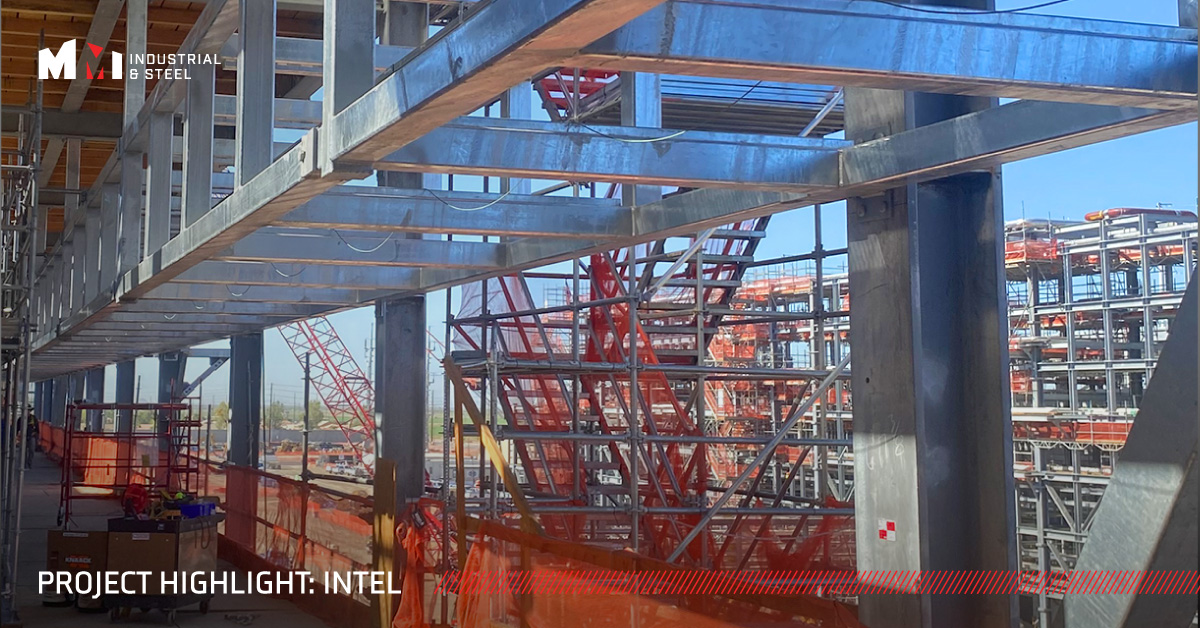
Steel fabrication is the central component of the construction and manufacturing industries, playing a crucial role in creating everything from skyscrapers to intricate machinery parts and material handling systems. The process involves cutting, bending, and assembling steel to create products, structures, and frameworks. To fully appreciate the complexity and precision involved, it’s essential to understand the types of steel used, the fabrication process itself, the tools involved, and the importance of the AISC quality assurance program.
Types of Steel Used in Fabrication
Steel comes in various forms, each tailored for specific applications based on its properties. The primary types of steel used in fabrication include:
1. Carbon Steel: This is the most commonly used type of steel, known for its strength and versatility. It is categorized based on its carbon content into low, medium, and high carbon steel. Low carbon steel is ductile and easy to shape, while high carbon steel is harder and more brittle.
2. Alloy Steel: This steel is mixed with other elements like chromium, nickel, or vanadium to enhance its properties. Alloy steel is prized for its durability and resistance to corrosion and wear, making it ideal for use in high-stress environments.
3. Stainless Steel: Known for its excellent resistance to corrosion and staining, stainless steel is often used in environments where moisture is a concern. It contains a significant amount of chromium, which forms a passive layer of chromium oxide, preventing rust.
4. Tool Steel: This type of steel is specially manufactured for making tools. It contains tungsten, molybdenum, cobalt, and vanadium, which give it high hardness, resistance to abrasion, and ability to retain shape at high temperatures.
The Steel Fabrication Process
The steel fabrication process can be broken down into several key steps:
1. Design and Planning: Before fabrication begins, detailed designs and plans are created using Computer-Aided Design software, also known as CAD. These designs guide the entire fabrication process, ensuring accuracy and efficiency.
2. Detailing: Detailing is a crucial step that involves creating detailed blueprints and shop drawings from the initial design plans. This step ensures that every part of the structure fits together precisely. Advanced software like Tekla Structures, AutoCAD, and SolidWorks is used to create 3D models and detailed drawings. These tools allow for the visualization of the assembly process, identification of potential issues, and precise measurements to be taken.
3. Cutting: This is the first step in the physical fabrication process. Steel is cut to the required dimensions using various methods such as shearing and sawing, or more advanced techniques, like laser cutting, plasma cutting, and water jet cutting. The precision of the detailing step ensures that each cut is accurate, minimizing waste and ensuring a perfect fit.
4. Bending and Forming: After cutting, the steel pieces are shaped using presses and rollers. This step involves bending the steel at precise angles and curves as specified in the detailed blueprints. The use of 3D models in the detailing phase ensures that the bends and forms are accurate and match the overall design.
5. Assembling: The cut and shaped pieces are then assembled. This may involve welding, bolting, or riveting to join the pieces together. Welding is the most common method, creating strong joints by melting and fusing the steel pieces. Detailed shop drawings provide clear instructions for assembly, ensuring that all parts fit together correctly.
6. Finishing: The final step involves surface treatment to enhance the steel's properties. This may include galvanizing to prevent rust, applying a powder coating for durability, or polishing to improve aesthetics. The detailing phase includes specifications for finishing processes, ensuring that the final product meets all requirements.
Tools Used in Steel Fabrication
Steel fabrication requires a range of specialized tools and equipment, including:
• Cutting Tools: Saws, shears, laser cutters, plasma cutters, and water jet cutters are used to cut steel to precise dimensions.
• Bending Tools: Press brakes and rolling machines shape the steel, creating bends and curves as required.
• Welding Equipment: MIG, TIG, and stick welding equipment are used to join steel pieces. Automated welding machines ensure consistency and precision.
• Measuring Tools: Calipers, micrometers, and laser measuring tools ensure that all dimensions are accurate and meet design specifications.
• Finishing Tools: Sandblasters, grinders, and polishers are used for surface treatment and finishing, providing the final touches to the fabricated steel products.
AISC Quality Assurance Program
Quality assurance is paramount in steel fabrication. Not only does it ensure durability and compliance with industry standards, but most importantly, it ensures safety. The American Institute of Steel Construction (AISC) provides a comprehensive quality assurance program that sets the benchmark for steel fabrication in the United States.
The AISC quality assurance program includes:
• Certification: Fabricators are certified by the AISC to ensure they meet rigorous standards in quality management, personnel qualification, and facility operations. Certification is a mark of excellence and reliability in the industry.
• Standards and Specifications: AISC develops and maintains standards and specifications for steel construction, covering aspects like design, fabrication, erection, and quality control. These standards ensure consistency and safety across all projects.
• Audits and Inspections: Regular audits and inspections are conducted to ensure compliance with AISC standards. These inspections cover every aspect of the fabrication process, from material handling to final assembly.
• Training and Education: AISC provides ongoing training and educational resources for fabricators to stay updated with the latest techniques, technologies, and industry best practices.
Steel fabrication is a complex and precise process, essential to modern construction and manufacturing. Understanding the types of steel used, the fabrication process, the tools involved, and the importance of quality assurance through the AISC program highlights the critical role of skilled fabricators in creating safe, durable, and reliable steel structures. As the industry continues to evolve, adherence to these principles ensures that fabricated steel remains a cornerstone of innovation and infrastructure development.



